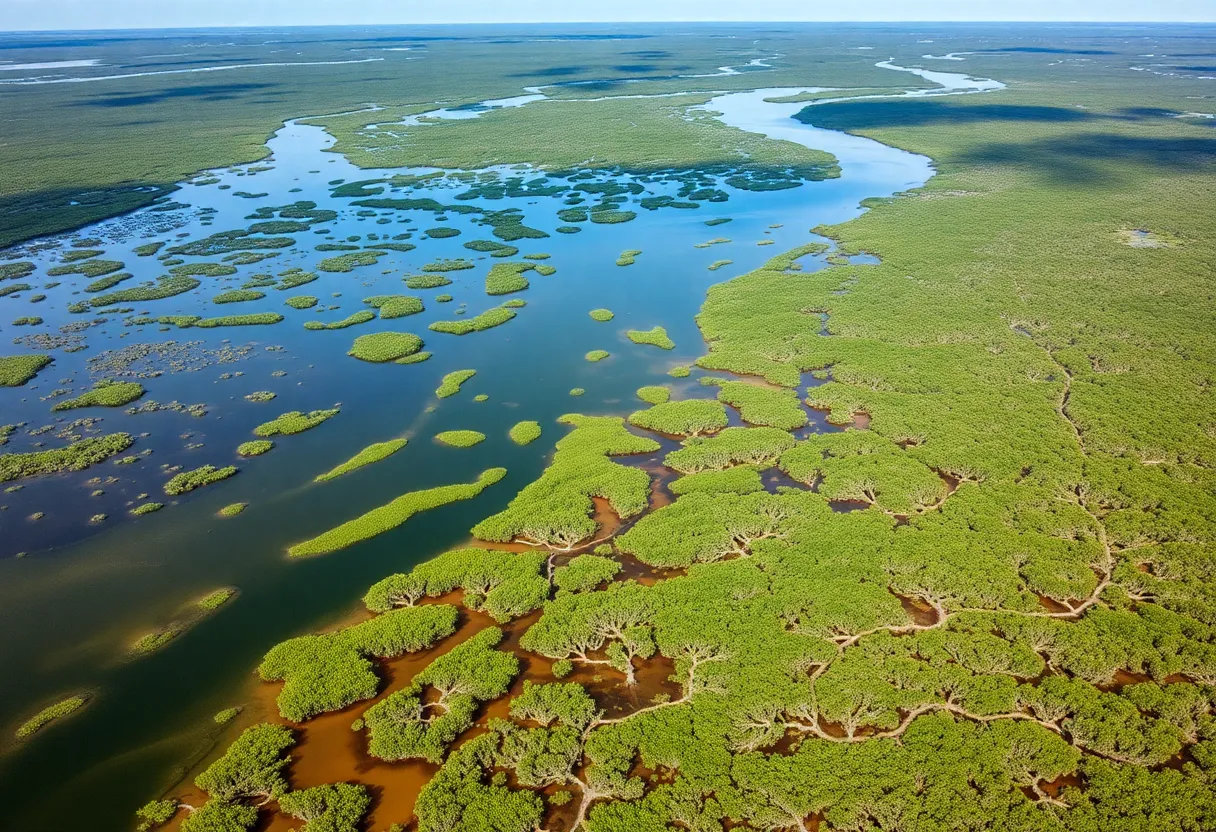News Summary
Florida and the U.S. Army Corps of Engineers have reached an agreement to expedite the construction of the Everglades Agricultural Area (EAA) Reservoir, targeting completion by 2029. This initiative aims to reduce harmful Lake Okeechobee discharges, improve water management, and support regional ecosystems. The project is part of a broader restoration plan with a $4 billion budget, highlighting Florida’s commitment to addressing environmental challenges and enhancing clean water supply while stimulating the local economy.
Florida and Federal Government Expedite Everglades Agricultural Area Reservoir Construction
Florida and the U.S. Army Corps of Engineers made a significant move on July 18 by signing an agreement aimed at speeding up the construction of the Everglades Agricultural Area (EAA) Reservoir. This project is crucial to mitigating the detrimental discharges into the St. Lucie River from Lake Okeechobee, a problem that has raised concerns among environmentalists and residents alike.
The agreement allows the South Florida Water Management District (SFWMD) to take on a larger role in the development of the EAA Reservoir, which has now set a new completion goal of 2029. This timeline offers a substantial improvement, being two years earlier than the previously anticipated date of 2032. The $4 billion project is also an essential component of the broader Comprehensive Everglades Restoration Plan (CERP).
Details of the EAA Reservoir Project
The EAA Reservoir will feature a vast 10,500-acre water storage area with the capacity to hold up to 78 billion gallons of water, complemented by a 6,500-acre stormwater treatment area. The primary objective of the reservoir is to provide clean water to Florida Bay while reducing the harmful nutrient-laden discharges that currently contribute to toxic algae blooms. These blooms threaten marine life and local economies dependent on clean water.
This new agreement also includes provisions that will allow for the expedited permitting process by the Corps, enabling Florida to manage future Everglades Restoration projects directly. Advocates for environmental preservation are hopeful that this increased state involvement will lead to improved outcomes for the region’s water management and ecosystem.
Importance of the Agreement
Support for this initiative has been robust, receiving a nod from higher authorities, including the President during his visit to Florida. The expedited agreement showcases Florida’s role as a “model partner” in environmental restoration projects, a sentiment echoed by federal officials. This partnership aims to enhance water management in the region, which is pivotal for industries like tourism, outdoor recreation, and real estate.
The EAA Reservoir is projected to have the capacity to supply 470 billion gallons of clean water each year to the Everglades and Florida Bay. Constructing this reservoir is seen as a vital step in combating the ecological issues that have arisen due to Lake Okeechobee discharges, particularly those that cause toxic algae blooms.
Ecological and Economic Implications
The establishment of the EAA Reservoir is part of long-term plans set out in the Comprehensive Everglades Restoration Plan, which aims to restore and protect South Florida’s ecosystems over an investment timeline of roughly 35 years that could exceed $10.5 billion. This massive effort seeks to alleviate various ecological problems, especially concerning the Caloosahatchee River, while improving the overall water flow to the Everglades.
While the agreement has broad support, opinions vary among nonprofit organizations regarding the project’s long-term effectiveness on water quality improvement. Some stakeholders express concerns about whether the EAA Reservoir will fulfill its intended purpose.
The urgency of this project is underscored by Florida’s ongoing water-related challenges, including the dual issues of flood protection and providing a sustainable water supply. Given the complex interplay of environmental needs and economic concerns, the responsibility now rests on local and federal authorities to ensure that the EAA Reservoir meets its goals while effectively serving the communities that rely on it.
The signing of this agreement marks a pivotal moment in Florida’s environmental restoration efforts and serves as testimony to the collaborative approach needed to address intricate ecological challenges.
Deeper Dive: News & Info About This Topic
Additional Resources
- Florida Governor’s Press Release
- Naples News
- Florida Politics
- Eco Magazine
- Fox 35 Orlando
- Wikipedia: Everglades
- Google Search: Everglades Restoration
- Google Scholar: Everglades Restoration
- Encyclopedia Britannica: Everglades
- Google News: Everglades Restoration
Author: Construction CA News
The CALIFORNIA STAFF WRITER represents the experienced team at constructioncanews.com, your go-to source for actionable local news and information in California and beyond. Specializing in "news you can use," we cover essential topics like product reviews for personal and business needs, local business directories, politics, real estate trends, neighborhood insights, and state news affecting the area—with deep expertise drawn from years of dedicated reporting and strong community input, including local press releases and business updates. We deliver top reporting on high-value events such as the Rose Parade, Coachella, Comic-Con, and the California State Fair. Our coverage extends to key organizations like the California Building Industry Association and Associated General Contractors of California, plus leading businesses in technology and entertainment that power the local economy such as Apple and Alphabet. As part of the broader network, including constructionnynews.com, constructiontxnews.com, and constructionflnews.com, we provide comprehensive, credible insights into the dynamic landscape across multiple states.




